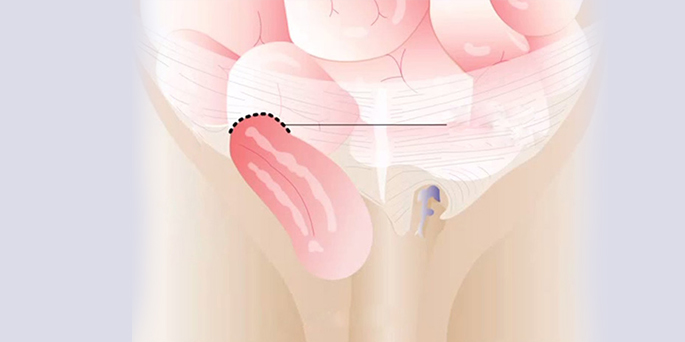
INGUINAL HERNIA
The hernia is the condition where the intestine inside the abdomen comes out of the abdominal wall. The hernia is called according to the location of it. The hernia in the umbilical region is called umbilical hernia, the hernia in the inguinal region is called inguinal hernia. Where the hernia is located, a soft mass is manifested itself in the form of a swelling.
While the baby is still in the mother’s womb, the testicles in boys and ovaries in girls are located near the kidneys within the abdomen. With the growth of the baby, the testicle and the ovary go down over the inguinal region. In boys, when the testicle go down into the bag, it draws a sac that covers the abdomen along the inguinal canal. Normally, this canal is closed after a while.
Normally this canal is closed in a while. If this canal is not closed, the intestines enter the sac and cause hernia formation. If not only the intestine enters but also the water enters the sac, it is called hydrocele. In girls, the cervix passes through this canal. If the inguinal canal remains open with the same mechanism, a hernia is formed.
Is the inguinal hernia more common in boys or girls?
Inguinal hernia is seen in approximately 2 out of every 100 children. In boys, the incidence is much higher. Inguinal hernia can be unilateral or on both sides. The incidence of inguinal hernia in premature infants is three times higher.
What are the symptoms of inguinal hernia?
There is no case occurred inguinal hernia in children due to force. The underlying causes are genetic factors. However, when the child cries and forces himself, a swelling occurs in the inguinal or bag. When the child lies on his back, the hernia sac disappears as the intestines go back into the abdomen. Occasionally, the intestines are trapped in the hernia sac, resulting in pain.
What is Strangled Hernia?
Normally, when the child is lying on his back, if the hernia sac is slightly rubbed and pressed into the abdomen, the intestines in the sac go into the abdomen. The hernia which cannot be sent into the abdomen by this way is called strangulated hernia. A child with strangulated hernia may experience restlessness, pain, and vomiting if it is not treated, loss of appetite, defecation and abdominal distention can occur. If the strangulated hernia is not treated and this condition is prolonged, the vessels supplying the intestines are impaired by the compression and bowel decay occurs. This is called strangulation. Strangulation is a life threatening condition that requires emergency surgery.
Treatment of Hernia
The treatment of hernia is as soon as possible performed surgery. The hernia should be repaired by surgery as soon as possible to prevent the intestine from strangulation. In premature infants, it can be postponed for a few months to reduce the risk of anesthesia. Hernia surgery is performed under general anesthesia. A small incision is made in the inguinal region, hernia sac is found, the intestines are sent to the abdomen and the sac is closed. Then, the incision in the skin is closed with melted sutures.
Except for premature and newborn children, the liquid food is started after the surgery and sent to their home. Most times there is no need for activity restriction. However, older children are advised to avoid heavy sport activities for a while.
During the postoperative period, there may be swelling within the surgical area and the bag due to operation. These swellings disappear spontaneously within a month. The hernia usually does not reappear. Some children with connective tissue disease and premature may sometimes have recurrent hernias.

